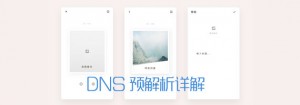高性能移动Web相较PC的场景需要考虑的因素也相对更多更复杂,我们总结为以下几点: 流量、功耗与流畅度。 在PC时代我们更多的是考虑体验上的流畅度,而在Mobile端本身丰富的场景下,需要额外关注对用户基站网络流量使用的情况,设备耗电量的情况。
关于流畅度,主要体现在前端动画中,在现有的前端动画体系中,通常有两种模式:JS动画与CSS3动画。 JS动画是通过JS动态改写样式实现动画能力的一种方案,在PC端兼容低端浏览器中不失为一种推荐方案。 而在移动端,我们选择性能更优浏览器原生实现方案:CSS3动画。
然而,CSS3动画在移动多终端设备场景下,相比PC会面对更多的性能问题,主要体现在动画的卡顿与闪烁。
目前对提升移动端CSS3动画体验的主要方法有几点:
尽可能多的利用硬件能力,如使用3D变形来开启GPU加速
|
1 2 3 4 |
-webkit-transform: translate3d(0, 0, 0); -moz-transform: translate3d(0, 0, 0); -ms-transform: translate3d(0, 0, 0); transform: translate3d(0, 0, 0); |
如动画过程有闪烁(通常发生在动画开始的时候),可以尝试下面的Hack:
|
1 2 3 4 5 6 7 8 9 |
-webkit-backface-visibility: hidden; -moz-backface-visibility: hidden; -ms-backface-visibility: hidden; backface-visibility: hidden; -webkit-perspective: 1000; -moz-perspective: 1000; -ms-perspective: 1000; perspective: 1000; |
如下面一个元素通过translate3d右移500px的动画流畅度会明显优于使用left属性:
|
1 2 3 4 5 6 7 8 9 10 11 12 13 14 15 |
#ball-1 { transition: -webkit-transform .5s ease; -webkit-transform: translate3d(0, 0, 0); } #ball-1.slidein { -webkit-transform: translate3d(500px, 0, 0); } #ball-2 { transition: left .5s ease; left:0; } #ball-2.slidein { left:500px; } |
注:3D变形会消耗更多的内存与功耗,应确实有性能问题时才去使用它,兼在权衡
尽可能少的使用box-shadows与gradients
box-shadows与gradients往往都是页面的性能杀手,尤其是在一个元素同时都使用了它们,所以拥抱扁平化设计吧。
尽可能的让动画元素不在文档流中,以减少重排
|
1 2 |
position: fixed; position: absolute; |
优化 DOM layout 性能
我们从实例开始描述这个主题:
|
1 2 3 4 5 6 7 8 9 |
var newWidth = aDiv.offsetWidth + 10; aDiv.style.width = newWidth + 'px'; var newHeight = aDiv.offsetHeight + 10; aDiv.style.height = newHeight + 'px'; var newWidth = aDiv.offsetWidth + 10; var newHeight = aDiv.offsetHeight + 10; aDiv.style.width = newWidth + 'px'; aDiv.style.height = newHeight + 'px'; |
这是两段能力上完全等同的代码,显式的差异正如我们所见,只有执行顺序的区别。但真是如此吗?下面是加了说明注释的代码版本,很好的阐述了其中的进一步差异:
|
1 2 3 4 5 6 7 8 9 10 11 |
// 触发两次 layout var newWidth = aDiv.offsetWidth + 10; // Read aDiv.style.width = newWidth + 'px'; // Write var newHeight = aDiv.offsetHeight + 10; // Read aDiv.style.height = newHeight + 'px'; // Write // 只触发一次 layout var newWidth = aDiv.offsetWidth + 10; // Read var newHeight = aDiv.offsetHeight + 10; // Read aDiv.style.width = newWidth + 'px'; // Write aDiv.style.height = newHeight + 'px'; // Write |
从注释中可找到规律,连续的读取offsetWidth/Height属性与连续的设置width/height属性,相比分别读取设置单个属性可少触发一次layout。
从结论看似乎与执行队列有关,没错,这是浏览器的优化策略。所有可触发layout的操作都会被暂时放入 layout-queue 中,等到必须更新的时候,再计算整个队列中所有操作影响的结果,如此就可只进行一次的layout,从而提升性能。
关键一,可触发layout的操作,哪些操作下会layout的更新(也称为reflow或者relayout)?
我们从浏览器的源码实现入手,以开源Webkit/Blink为例, 对layout的更新,Webkit 主要通过 Document::updateLayout 与Document::updateLayoutIgnorePendingStylesheets 两个方法:
|
1 2 3 4 5 6 7 8 9 10 11 12 13 14 15 16 17 18 19 20 21 22 23 24 25 26 27 28 29 30 31 32 33 34 35 36 37 38 39 40 41 42 43 44 45 |
void Document::updateLayout() { ASSERT(isMainThread()); FrameView* frameView = view(); if (frameView && frameView->isInLayout()) { ASSERT_NOT_REACHED(); return; } if (Element* oe = ownerElement()) oe->document()->updateLayout(); updateStyleIfNeeded(); StackStats::LayoutCheckPoint layoutCheckPoint; if (frameView && renderer() && (frameView->layoutPending() || renderer()->needsLayout())) frameView->layout(); if (m_focusedNode && !m_didPostCheckFocusedNodeTask) { postTask(CheckFocusedNodeTask::create()); m_didPostCheckFocusedNodeTask = true; } } void Document::updateLayoutIgnorePendingStylesheets() { bool oldIgnore = m_ignorePendingStylesheets; if (!haveStylesheetsLoaded()) { m_ignorePendingStylesheets = true; HTMLElement* bodyElement = body(); if (bodyElement && !bodyElement->renderer() && m_pendingSheetLayout == NoLayoutWithPendingSheets) { m_pendingSheetLayout = DidLayoutWithPendingSheets; styleResolverChanged(RecalcStyleImmediately); } else if (m_hasNodesWithPlaceholderStyle) recalcStyle(Force); } updateLayout(); m_ignorePendingStylesheets = oldIgnore; } |
从 updateLayoutIgnorePendingStylesheets 方法的内部实现可知,其也是对 updateLayout 方法的扩展,并且在现有的 layout 更新模式中,大部分场景都是调用 updateLayoutIgnorePendingStylesheets 来进行layout的更新。
搜索 Webkit 实现中调用 updateLayoutIgnorePendingStylesheets 方法的代码, 得到以下可导致触发 layout 的操作:
Element: clientHeight, clientLeft, clientTop, clientWidth, focus(), getBoundingClientRect(), getClientRects(), innerText, offsetHeight, offsetLeft, offsetParent, offsetTop, offsetWidth, outerText, scrollByLines(), scrollByPages(), scrollHeight, scrollIntoView(), scrollIntoViewIfNeeded(), scrollLeft, scrollTop, scrollWidthFrame, HTMLImageElement: height, widthRange: getBoundingClientRect(), getClientRects()SVGLocatable: computeCTM(), getBBox()SVGTextContent: getCharNumAtPosition(), getComputedTextLength(), getEndPositionOfChar(), getExtentOfChar(), getNumberOfChars(), getRotationOfChar(), getStartPositionOfChar(), getSubStringLength(), selectSubString()SVGUse: instanceRootwindow: getComputedStyle(), scrollBy(), scrollTo(), scrollX, scrollY, webkitConvertPointFromNodeToPage(), webkitConvertPointFromPageToNode()
进一步深入Layout,那上文中必须更新的必要条件是什么? 在 Stoyan Stefanov 的 Rendering: repaint, reflow/relayout, restyle 一文中已做比较详细的解答,可移步了解~
参考自:前端观察






支持支持!